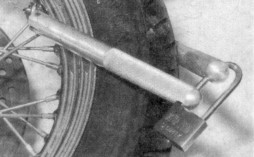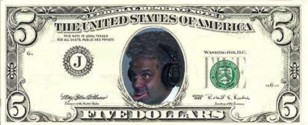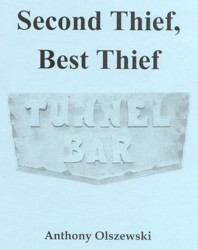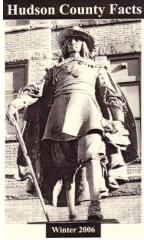
|
|
|
LINKS | LINUX | MAIN MENU | PS2 | REFERENCE | USENET |
Last modified:
The modification date refers only to this menu.
Anthony Olszewski
COPYRIGHT 1997 - COMPUTERCRAFT
You're pulling into the parking lot of a large office building. It's very crowded, so you've got to drive around back, almost next to the garbage dumpster. Just as you're pulling in, your eyes open wide. Sitting there waiting to get tossed is a skid full of PCs! This has got to be your lucky day!
Probably not. The Dumb Terminal
 |
With the one-two punch combination of downsizing and the rise of the PC on the corporate desktop, the most commonly encountered electronic item in commercial garbage is the dumb terminal. This is a monitor (nearly always monochrome) and keyboard combination. The hardware is of a proprietary design. Neither the monitor nor the keyboard will work with a standard, IBM compatible, PC without extensive re-engineering. Even the display and the keyboard of one dumb terminal will not work with another manufacturer's models. |
Dumb terminals are hooked-up to a mini or a mainframe computer, most often through a phone or other serial link. Without the heavy computer locomotive out front, the dumb terminal is just not going anywhere! That the dumb terminal "works" - displays some sort of prompt when it's plugged in -- is besides the point. Unless, and until, spurred on by a real computer, the prompt is in the same class as the twitching of the legs of a squashed bug -- proof really only of the absence of processing, not of its presence.
There used to be a TV repair shop around here that would sell dumb terminals to dumb customers. I was marketing used computer equipment at the time. The poor victims would then proceed to drag the dumb terminal to me, having been told by the TV repairman/con artist that, "it works good, but just needs a part." The sorry task would then fall to me to explain that the "part" required was an IBM 360 mainframe!
For the tinkerer there are just about only two uses for dumb terminals. Hooked up to a TNC and a tranceiver, a dumb terminal can be used for packet radio. A standard PC is a much better choice, though, for, lacking any hard or floppy drive, the dumb terminal can not log or otherwise store information. What this means is that with a dumb terminal for packet, you can only read messages as they scroll across the screen.
The other use is the intended one. With a PC running UNIX, or some other multitasking OS, an operator at a dumb terminal can either maintain and administer the system or run programs remotely on the host PC. If the PC has enough RAM and processing brawn, a large number of users can work virtually simultaneously. Some BBS programs can also be configured to work this way.
As could be discerned from the preceding discussion, used dumb terminals have no resale value. As a matter of fact the display is particularly hard to dispose of -- within EPA guidelines, at any rate.
|
Heavy Metal -- Minis and Mainframes
From time to time entire minicomputers, and even the occasional mainframe, might be found on their way to the electronic equivalent of the elephant's graveyard. There is a minor hobby of restoring these systems. The only value these machines have now is in the category of curiosity -- not monetary, intrinsic, or collector's. Don't expect anybody to pay you anything for an old minicomputer. Also with the old iron, don't hope to run programs that actually do anything useful. Where It All Began - The PC And The XT LARGE numbers of these systems are thrown away every day. Most wind up coming with the original monochrome monitor. The CPU is the original 8088 -- the father of the 286! Keep in mind that the clock speed on these systems is 4.77 mhz. It's possible to bump that up to 8 mhz, if you can find a NEC V20 chip out and about. The NEC V20 is an upgrade replacement for the 8088 CPU. Compare even the 10 mhz to the 200 mhz of today's processors! The hard drive, if any, if working, will be long past its expected lifespan. The original displays were green phosphor. The later ones were generally amber. The amber monochromes are easier on the eyes. With the PC, XT, and XT clones, there is no SETUP screen. All hardware configuration is by the DIP switches on the motherboard. The MFM and RLL hard drives need to be low level formatted. The MFM or RLL adapter card might have a low level formatting routine built in with firmware. Try this:
1)From the A: or B: prompt type DEBUG and hit the ENTER key
2)From the DEBUG - prompt type in G=C800:5 and then hit ENTER.
3)If you are lucky, a menu will start up requesting the hard drive parameters. You can get these
from the drive manufacturer's Web Site of from
THE REF
ONTRACK's old version of DISK MANAGER works very well for low level formatting. You might find a copy for sale at a computer show. Shareware programs are also available. Low level formatting has to be done before defining the partitions with the DOS FDISK. Finally, the usual FORMAT needs to be done. MFM and RLL hard drives require specific interface cards. Each card works with only a small number of models. Jumpers often have to be changed to get a MFM or RLL card to work with a certain hard drive. This information is not easy to obtain. So, don't expect an MFM or RLL drive to work, unless you get the card with it. These ancient drives use a 34 pin cable, the same as for a floppy drive, and a twenty pin cable. On the back of the drive, generally in line with the cable and the power connectors, are a row of jumper pins. If you are connecting the twisted end of the cable (what would be the A: for a floppy), then the second set of pins (3 and 4) will be jumpered. If the straight (in the middle) part of the cable (what would be B: for a floppy) is used for the hard drive, then the first set of pins (1 and 2) are jumpered. To connect a second hard drive to an MFM or a RLL card, you'll use two 20 pin cables, but both drives will connect to the same 34 pin cable. There is a terminator - most often on the circuit board of the drive. In a double drive set up, the terminator comes off of the first drive but is left on the second in the series. The twisted end goes on the first drive and the straight end of the 34 pin cable goes on the second drive. The second set of pins will be jumpered for both drives. Realistically, there's no way to put a new IDE drive into an PC or an XT. If the one you've got dies, then you can only hope to pull one out of another system. And, yes, it'll be just as old and on its last legs, too! Life's funny that way. One thing that PCs and XTs are really good for is text and other data input. Old versions of WORDPERFECT and WORDSTAR run like tops on the 8088. A HTML guru can create a complex web Site -- which has to be an ASCII file anyhow -- with this hardware. The source file for a program can be entered line by line and again saved as a ASCII text file. This file will be compiled and run on a heavier duty computer.
New Jersey Short Stories
 $25 – Lock Included – Free Shipping in the USA Payment by PayPal – E-mail anthony.olszewski@gmail.com


 Political corruption is a tradition here. First issue in a series by Anthony Olszewski – Click HERE to find out more.

|
|

The original PROCOMM communications program also works very well on this tired hardware. You are going to need PKUNZIP to "decompress" the file.
With a communications program and a modem you can use a PC or XT to browse BBSes. With an Internet shell account, a PC/XT can use all of the text-based facilities of the net -- E-MAIL, FTP, USENET, TALK, and lots more. Through TELNET, programs can be run on a remote system, which might be a powerful PC, a Mac, or even a super-computer! With Lynx as a browser, text information can be accessed on the World Wide Web.
If you are using an internal modem, any model should work with any IBM compatible that is NOT MCA (The PS2s, except for the models 25 and 30 use MCA). With an external modem the speed of the UART chip becomes a consideration. An external m odem connects to the serial port - the 9 or 25 pin male connector. The older serial ports used a 8250 UART chip. This is fine for modems running at 9600 Baud or less. For 14.4 or faster modems, a 16550 UART chip is required. With the PC and XT, it's not easy to replace the serial card for often the communications ports are built into a memory expansion/extension card. Taking out this card will, as a rule, remove 384K of RAM from the system, leaving the system with only 256K. Most progr ams need the full 640K. If the 8250 UART is in a socket, it's possible to carefully pry(WITH POWER OFF, OF COURSE)it out and exchange it with a 16550.
With a fax/modem you can send faxes from a word-processing program on a PC/XT. A fax send is basically the same as a print to the computer. These PC senior citizens are just not up to fax receive. A fax receive really needs a minimum of a 386 and a VGA monitor.
Hackers and phreakers often use old systems to ply their trade. This way if the source of dubious calls is traced, the seizure of the machine is no great loss.
| The original PC had 64k of RAM. I'd immediately ditch one of these, except perhaps as a quaint curio. Most PC/XTs had 256k of RAM as standard. Upgrade cards were commonly installed to bring the RAM up to 640k (and to add COM ports). With the proper driver, these cards often provided a Real-Time clock. The QUADBOARD was one of the more popular brands. |
 |
The original PC had a port in the back for hooking up a cassette tape deck. This was basically a useless concept left over from some TRS-80 mentality. I never met anybody who used a cassette tape with an IBM PC. You might want to try it - like if you are doing life without parole and need something to keep your mind occupied and they won't let you keep canaries in your cell.
| Lots of old 8088 COMPAQ, suitcase-style luggables are floating around. My advise is not to bother with them. Not only are they ancient, but they constantly die. These first attempts at a portable system often took a lot of banging about and seem to suffer from a lot of loose connections. |
 |
The first big "upgrade" in the video department was the CGA color monitor. You can still buy new CGA display cards. A CGA display was a cartoon-colored, eyeball-twisting horror. But it did allow for graphs and crude graphics which were not possible on the monochrome monitor. With CGA, for the first time, graphic games became possible on the IBM personal computers.
Right here lets give everybody a healthy dose of reality. Get the idea out of your head that you're going to get an old computer for nothing and then "set it up for the kids to play some games on." When I was in the fourth grade in the mid-sixties (year, not longitude), my mother gave me a black and white television for my birthday. I HAD MY OWN TV!!! Nobody could talk to me for about a month. I became the most stuck up little brat that you could imagine. End of flashback. Recently, a friend of mine gave each of his two grandchildren a black and white television set. They refused to use the "broken" color-challenged equipment! Kids in the nineties (year, not streets), are sophisticated and severe critics of technology. They won't accept third rate, let alone fortieth rate.
For text-entry, a monochrome monitor is superior to a CGA.
The big jump from the XT was the XT TURBO. These used various 8 or 10 mhz 8088 chips. For elementary wordprocessing, the difference is essentially invisible.
One big advantage with the XT TURBO is that there are voice mail cards that work very well with them. With one of these adapters and an old clunker of an XT clone you can devise a voice mail system that would be the envy of a large corporation. One very popular brand even allows for numeric entry (so callers can input credit card numbers), calling an emergency number when a alarm goes off, paging you when you get a message, automated delivery of a message to a list of phone numbers, and lots more
A common children's crusade is trying to install a 3.5" floppy drive into a PC/XT or an XT TURBO. It's not easy. Special cards were sold that were supposed to do this. They often were hell to get to work. The DOS DRVPARM statement in the config.sys was supposed to do the trick, but usually didn't. In any event, a lot of tweaking was required. If you really need a 1.44 meg floppy, hold out for a 286 TURBO. It's easy to put a new drive in one of these.
IBM made two models of PS2s that were essentially XT clones with 720k floppies. The model 30 is a conventional desktop system. The model 25 is an integrates monochrome VGA monitor and system unit. If you can find an 20 meg HARDCARD hard drive, it's easy to install into a PS2 model 25.
286 upgrade cards for 8088 systems were once manufactured. At this point, it's not worth bothering with them.
Because of the placement of the floppy drive mounts, new motherboards will not fit into a PC or an XT case without a lot of sheet metal work. The PC had a 63.5 watt power supply which was not really sufficient even back then. The XT (and its imitators) had a 150 watt.

IBM's next quantum leap in PC architecture was the AT. The first widely available 286, the AT was an object of awe when it first came out. Unfortunately, it's now an object of derision. The clock speed was a paltry 8 mhz. This was almost immediately beaten by the 12 mhz AT clones. The AT disk drive definition table was severely restricted, for it contained no USER DEFINED entry. It was still a pain to get a 3.5" floppy to work in an AT.
| When I get an AT, I immediately pull out the motherboard and discard it. I keep the case and power supply. When I get an old 486 board, I stick it in an AT case. I like setting up my test systems in AT cases. With the heavy steel and grey paint, it's like having a bunch of little tanks around the office! |
 |

Besides the 286 chip, the big advance with the AT was the configuring of hardware through a SETUP program. The AT did not have this built into a ROM chip. You had to run a SETUP disk. A shareware version is GSETUP.ZIP


Some of the first 286 clones used proprietary power supply and case designs. Leave these in the dumpster.
to be continued
|
COMPUTERCRAFT |
|
|

Very brandable Domains for Sale -- The GET NJ family of Sites, managed by Anthony Olszewski, features tens of thousands of Pages Online at dozens of active domains, many with a New Jersey focus. Other advertising opportunities – including enterprise and exclusive placements – exist at a wide range of Web Sites. Your ad can appear at one Page or at many, many thousands of Pages simultaneously! A large slice of the domains have been Online for more than five years, some for over ten! In addition to advertising, many great Domains are available for purchase or license Text Link Advertising Program Business name, Web Site Link and a brief description or motto – runs for one month in the Page (or Pages) of your choice. Hudson County Politics From Frank Hague to Robert Janiszewski, in this New Jersey county, political corruption is a tradition. Former NJ Governor Brendan Byrne wants to be buried here so he can stay active in Democratic politics! You'll find lots about Senator Robert Menendez, too. GRAVE ROBBER Jersey City Computer Repair 297 Griffith Street, Jersey City, NJ - 201-798-2292 - In the Heights just off of Kennedy Blvd. - Very close to Journal Square and Union City, just five minutes away from Hoboken, Downtown Jersey City, Newport, the Waterfront, Secaucus, North Bergen and Weehawken - Tech support for The Jersey City Mayor's Office during the administration of Bret Schundler - PC repair - Tivos, too!, upgrade, hardware install, software install, data recovery, spyware removal, virus removal, replace hard drive, replace motherboard, data recovered from notebook computers, recover lost XP passwords, password recovery |


For All Sorts of Unique New York City Information, Visit GET NY! |